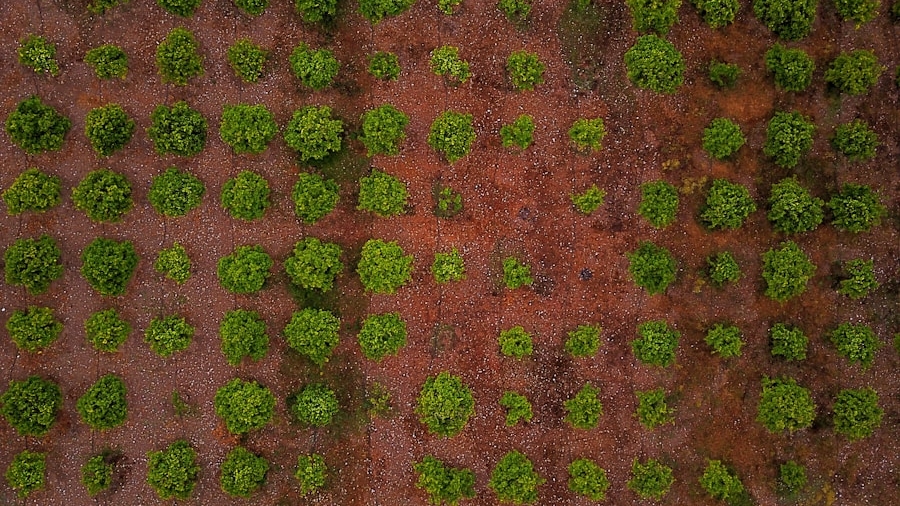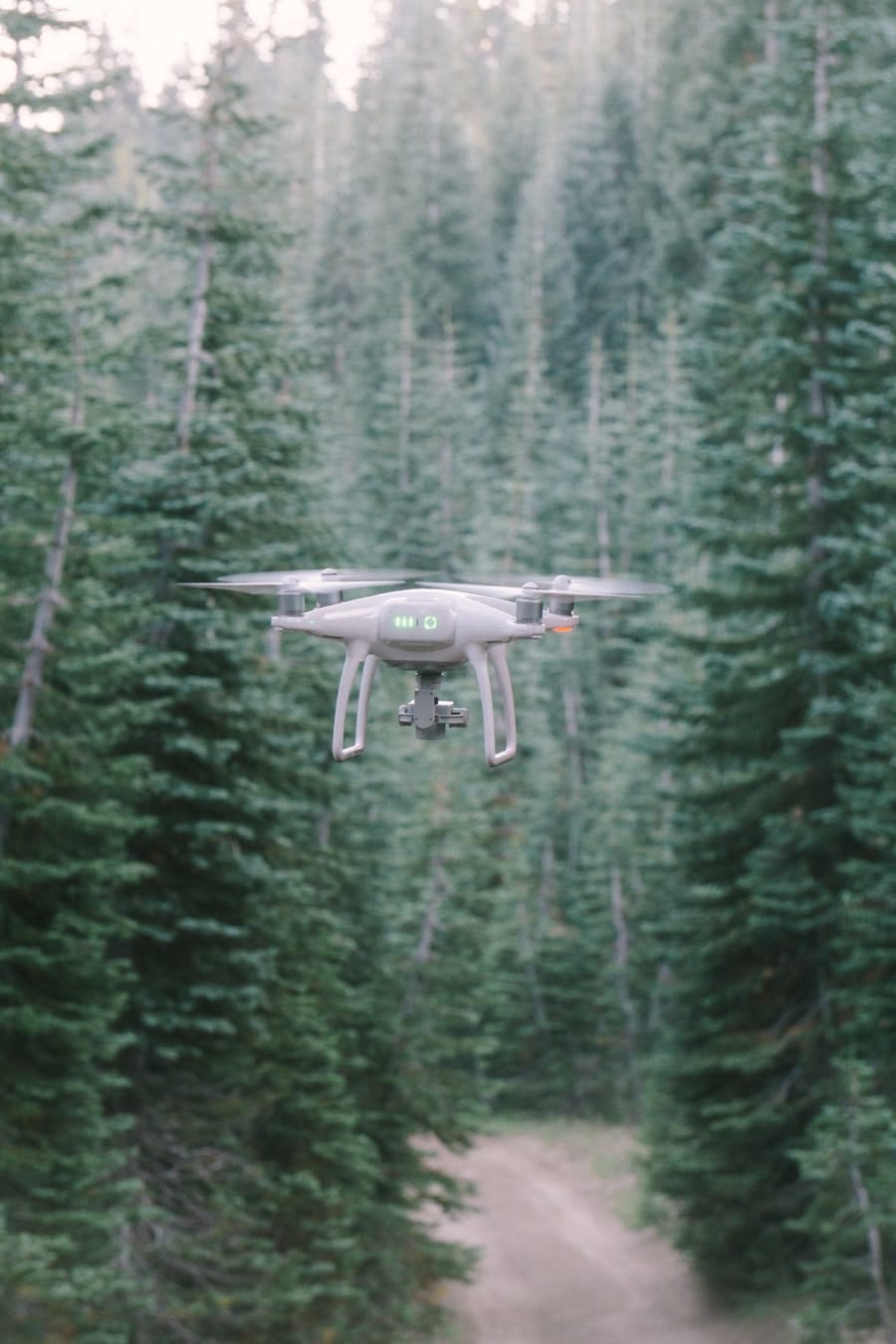The advent of drone technology has revolutionized various sectors, and one of the most promising applications is in the field of reforestation. As global deforestation rates continue to rise, driven by agricultural expansion, urbanization, and climate change, the need for innovative solutions to restore degraded landscapes has never been more urgent. Drones, or unmanned aerial vehicles (UAVs), offer a unique approach to reforestation by enabling efficient seed dispersal, monitoring forest health, and mapping areas for restoration.
This technology not only enhances the speed and scale of reforestation efforts but also provides a cost-effective alternative to traditional methods. Drones can cover vast areas in a fraction of the time it would take human laborers, making them particularly valuable in remote or difficult-to-access regions. By utilizing aerial imagery and advanced data analytics, drones can identify suitable planting sites and assess the ecological conditions necessary for successful reforestation.
This integration of technology into environmental restoration efforts represents a significant shift in how we approach the challenge of reforesting our planet, highlighting the potential for drones to play a pivotal role in sustainable land management practices.
Key Takeaways
- Drones are revolutionizing reforestation efforts by offering a faster, more efficient, and cost-effective way to plant seeds and restore degraded landscapes.
- Using drones for seed planting in reforestation projects can cover large areas quickly, reach inaccessible terrain, and reduce the need for manual labor, making it a highly advantageous approach.
- The technology and techniques used in drone-assisted reforestation include high-resolution mapping, precision seed delivery, and automated flight planning, ensuring accurate and targeted seed dispersal.
- Drone-assisted reforestation has a positive environmental impact by restoring biodiversity, mitigating climate change, preventing soil erosion, and improving ecosystem services in degraded areas.
- Despite its potential, challenges and limitations of using drones for reforestation include regulatory restrictions, limited payload capacity, and the need for further research on seed viability and ecosystem adaptation.
Advantages of Using Drones for Seed Planting
One of the primary advantages of employing drones in reforestation is their ability to significantly reduce the time and labor costs associated with traditional planting methods. Manual planting can be labor-intensive and slow, often requiring teams of workers to traverse rugged terrain. In contrast, drones can quickly cover large areas, dispersing seeds with precision and efficiency.
This capability is particularly beneficial in regions where access is limited due to challenging topography or environmental conditions. For instance, in mountainous or densely forested areas, drones can navigate obstacles that would hinder ground crews, ensuring that seeds reach their intended locations. Moreover, drones can enhance the accuracy of seed dispersal.
Equipped with advanced GPS technology and sophisticated algorithms, drones can target specific areas for planting based on ecological data. This precision minimizes seed wastage and increases the likelihood of successful germination. Additionally, drones can be programmed to disperse seeds at optimal times, taking into account factors such as soil moisture and weather conditions.
This level of control is difficult to achieve with manual planting methods, where timing and placement may be less precise.
Technology and Techniques Used in Drone-Assisted Reforestation
The technology behind drone-assisted reforestation is continually evolving, incorporating various techniques that enhance their effectiveness in seed planting. One notable method is the use of specialized seed pods that are designed for aerial dispersal. These pods often contain seeds encased in a nutrient-rich substrate that protects them during their fall to the ground.
Upon landing, the pods break open, allowing the seeds to germinate in a conducive environment. This technique not only improves seed survival rates but also facilitates the planting of diverse species in a single flight. In addition to seed pods, drones are increasingly equipped with multispectral cameras and LiDAR (Light Detection and Ranging) technology.
These tools enable detailed mapping of landscapes, allowing for the assessment of vegetation health and soil conditions. By analyzing this data, researchers can identify areas that are most suitable for reforestation efforts. Furthermore, drones can monitor the growth of newly planted trees over time, providing valuable insights into the success of reforestation initiatives and informing future strategies.
Environmental Impact of Drone-Assisted Reforestation
The environmental impact of drone-assisted reforestation is multifaceted and largely positive. By facilitating the rapid restoration of degraded ecosystems, drones contribute to biodiversity conservation and habitat restoration. Reforestation efforts can help combat soil erosion, improve water quality, and enhance carbon sequestration—key factors in mitigating climate change.
For example, studies have shown that reforesting areas can significantly increase carbon storage capacity, which is crucial for offsetting greenhouse gas emissions. Moreover, drone-assisted reforestation can promote ecological resilience by restoring native plant species that support local wildlife. The ability to plant diverse species across large areas helps create more robust ecosystems that are better equipped to withstand environmental stressors such as droughts or pests.
This diversity not only benefits wildlife but also enhances ecosystem services that humans rely on, such as clean air and water.
Challenges and Limitations of Using Drones for Reforestation
Despite the numerous advantages of using drones for reforestation, several challenges and limitations must be addressed to maximize their potential. One significant hurdle is regulatory compliance; many countries have strict regulations governing drone usage, particularly concerning airspace restrictions and safety protocols. Navigating these regulations can be complex and may limit the operational scope of drone-assisted reforestation projects.
Additionally, while drones can efficiently disperse seeds over large areas, they cannot replace the need for ground-based assessments and follow-up care. Successful reforestation often requires ongoing maintenance, including monitoring plant health and managing competing vegetation. Drones can assist in these tasks but cannot entirely eliminate the need for human intervention.
Furthermore, there are concerns regarding the long-term viability of seeds dispersed from drones; factors such as seed quality, local climate conditions, and soil health play critical roles in determining whether these seeds will thrive.
Case Studies of Successful Drone-Assisted Reforestation Projects
Several successful case studies illustrate the effectiveness of drone-assisted reforestation initiatives around the globe. One notable example is the “Billion Tree Campaign” launched by the United Nations Environment Programme (UNEP), which has seen drones deployed in various countries to plant millions of trees efficiently.
Another compelling case is found in Madagascar, where a project aimed at restoring degraded landscapes has utilized drones to plant over 1 million trees in just a few months. The project employed a combination of drone technology and community engagement to ensure that local populations were involved in the reforestation process. This approach not only enhanced the project’s success but also fostered a sense of ownership among community members regarding their environment.
Future Potential and Innovations in Drone-Assisted Reforestation
The future potential for drone-assisted reforestation is vast, with ongoing innovations poised to enhance their capabilities further. One area of development is the integration of artificial intelligence (AI) into drone operations. AI algorithms can analyze environmental data in real-time, allowing drones to adapt their planting strategies based on changing conditions or emerging threats such as pests or diseases.
This adaptability could significantly improve the success rates of reforestation efforts. Additionally, advancements in battery technology may extend the operational range of drones, enabling them to cover even larger areas without needing frequent recharging. This would be particularly beneficial for remote regions where access is challenging.
Furthermore, researchers are exploring the use of bioengineered seeds that could be more resilient to harsh environmental conditions or pests, increasing the likelihood of successful germination when dispersed from drones.
Conclusion and the Role of Drones in Sustainable Reforestation Efforts
Drones represent a transformative tool in the quest for sustainable reforestation solutions. Their ability to efficiently plant seeds over large areas while minimizing labor costs positions them as a vital asset in combating deforestation and restoring ecosystems worldwide. As technology continues to advance, the integration of drones into reforestation strategies will likely become more sophisticated, enhancing their effectiveness and expanding their applications.
The role of drones in sustainable reforestation extends beyond mere seed dispersal; they serve as a bridge between technology and environmental stewardship. By harnessing this innovative approach, we can work towards restoring our planet’s forests more effectively than ever before, ensuring that future generations inherit a healthier and more resilient environment. The ongoing collaboration between technologists, ecologists, and local communities will be crucial in realizing this vision and maximizing the potential benefits that drone-assisted reforestation offers.
In a related article, The Best Apple Tablets for 2023, the latest advancements in technology are highlighted, showcasing how Apple tablets are revolutionizing the way we work and play. Just like drones are transforming reforestation efforts, these tablets are changing the landscape of productivity and entertainment. Both articles demonstrate the power of innovation and how technology can be used to make a positive impact on our world.
FAQs
What are drones?
Drones, also known as unmanned aerial vehicles (UAVs), are aircraft that are operated without a human pilot on board. They can be controlled remotely by a human operator or autonomously by onboard computers.
How are drones assisting in reforestation and seed planting?
Drones are being used to plant seeds in areas that are difficult to access or are environmentally sensitive. They can fly over large areas and distribute seeds with precision, helping to reforest areas more efficiently than traditional methods.
What are the benefits of using drones for reforestation and seed planting?
Using drones for reforestation and seed planting can significantly reduce the time and cost associated with these activities. Drones can access remote or hard-to-reach areas, and their precision in seed distribution can lead to higher success rates in reforestation efforts.
Are there any challenges or limitations to using drones for reforestation and seed planting?
Some challenges include the limited payload capacity of drones, as well as the need for careful planning and coordination to ensure that the right types of seeds are planted in the right locations. Additionally, regulations and airspace restrictions may impact the use of drones for reforestation efforts.
What are some examples of organizations using drones for reforestation and seed planting?
Several organizations and companies around the world are using drones for reforestation and seed planting, including BioCarbon Engineering, DroneSeed, and the World Economic Forum’s 1t.org initiative. These organizations are leveraging drone technology to support reforestation efforts in various regions.



